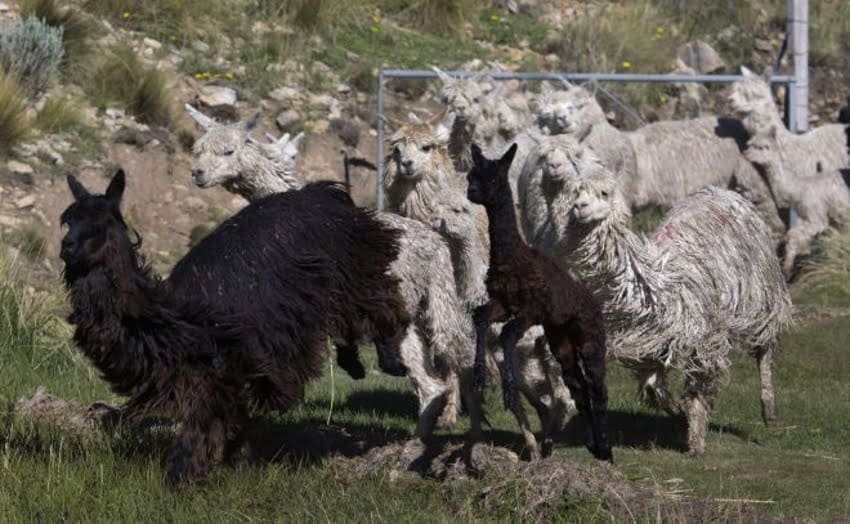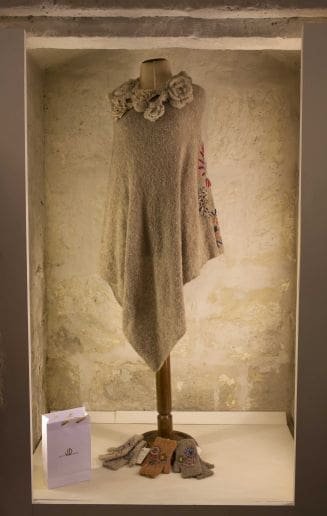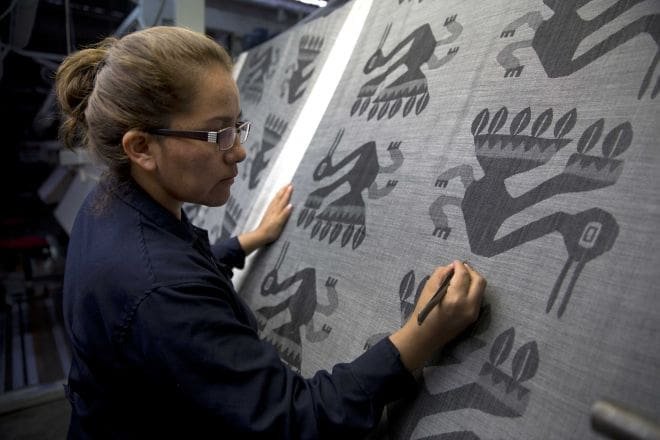PUNO, Peru (AP) – The 4 million alpacas that graze on the remote slopes of Peru’s southeastern Andes wear warm coats of a silky fiber highly sought in the United States, Europe and Asia.
Colored in one of 24 different natural tones, the fiber from this domesticated camelid smaller than a llama is processed after an annual shearing, with each alpaca producing a little more than 8 pounds of fiber each year.
The finest threads are chosen, then washed, dried, cleaned up and converted into yarn. Finally, the yarn is woven into fabric used to make clothing.
An estimated 1.2 million poor Peruvians raise alpacas but must fight to keep them healthy from mange and freezing temperatures that can kill the babies. They sell the fiber for $3 a pound, but the same amount on the international market can fetch as much as $300, according to agrarian authorities in Puno.
In Arequipa, an important southern Peruvian city about 185 miles from Puno, factories use the fiber to manufacture 46 million pieces of fine clothing annually, including cardigans, sweaters, coats and scarves destined for sale in the United States, Germany, Japan and other wealthy nations.
Beginning in 2014, the Peruvian government launched special labeling for “Alpaca of Peru” to position the product in the global luxury market. About 80 percent of the world production of the alpaca fiber once used by the Incas is from Peru.
“I’m super happy to be able to work with this fiber, to take it to the world in expositions, fashion shows,” said Jenny Duarte, a clothes designer in Arequipa. “It’s a noble fiber, a luxury fiber, really marvelous because its covering is light, is soft.”
Source: Fox News Latino
Photos:
1. In this March 9, 2016 photo, black and white alpacas run on the Mallkini Hacienda alpaca farm in the highlands of the Puno department of Peru. Colored in one of 24 different natural tones, the fiber from this domesticated camelid smaller than a llama is processed after an annual shearing, with each alpaca producing a little more than 8 pounds (3.7 kilograms) of fiber each year. (AP Photo/Martin Mejia)
2. In this March 7, 2016 photo, a creation made of alpaca fiber, by Peruvian designer Jenny Duarte, stands at her workshop in Arequipa, Peru. About 80 percent of the world production of the alpaca fiber once used by the Incas is from Peru. (AP Photo/Martin Mejia)
3. In this March 7, 2016 photo, a woman removes small balls of threads, considered imperfections, from cloth made of alpaca fiber, at the Inkapalca factory which produces the Peruvian clothing brand Kuna, in Arequipa, Peru. Beginning in 2014, the Peruvian government launched special labeling for “Alpaca of Peru” to position the product in the global luxury market. (AP Photo/Martin Mejia)







